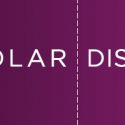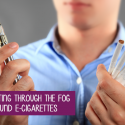The Link between Depression and Substance Abuse
Anyone can struggle with substance abuse and depression—even famous people. Mickey Mantle, Robin Williams, and Buzz Aldrin all had depression and a substance use disorder (SUD). Robin Williams’ life ended when he committed suicide, the risk of which increases with depression. And when an SUD is also involved, the risk of suicide is even greater.
Knowing the signs of depression
Common signs of depression include:
- Feeling sad, empty, irritable, worthless, guilty, or hopeless.
- Experiencing changes in sleep and/or appetite, low energy, or agitation.
- Having difficulty thinking, concentrating, or making decisions, and having regular thoughts of suicide.
Getting treatment for depression and SUDs
Working with a health care team is the best way to find the right treatment plan for you. Your care team may include counselors, social workers, therapists, and other health care professionals who specialize in treating substance abuse. They can work together on a treatment plan that may include medication, individual and family therapy or counseling, and support groups, among others.
Staying on track with treatment
You can manage your depression and improve your health if you:
- Follow your treatment plan, take medications only as prescribed, attend all treatment sessions, and “work” your change plan. When you don’t follow your plan, you increase your risk of relapse to either depression or substance abuse. If you feel like stopping treatment, share this with your therapist BEFORE making a final decision. If you are not on medications and not improving to the degree you would like, ask your doctor about medication options.
- Get active in a mutual support program for depression, a substance use disorder, or both. Approach recovery as a “we” and not an “I” process. Others who have either or both of these disorders can provide you with support and help since they know what it is like to have to cope with two types of disorders.
- Talk about any suicidal thoughts, feelings, or plans with a friend or family member, therapist, or health care professional. Risk factors include a recent loss, a prior attempt or plan, lack of support from others, suicide by a loved one, or chronic depression. Do not keep your suicidal thoughts to yourself.
- Talk about your cravings for alcohol or drugs—and learn strategies to fight off thoughts of wanting to use substances. Cravings are especially common in the early phase of recovery.
- Avoid thoughts that contribute to depression such as expecting the worst, ignoring the positive, and focusing on the negative, or seeing things worse than they really are. Therapy can help you learn ways to identify and change your thinking, which can then improve your mood.
- Reduce self-criticism and show self-compassion. Accept your limitations and flaws rather than judging yourself.
- Accept small steps toward improvement as all symptoms will not go away. Improvement often comes in small steps.
- Exercise and engage in pleasant activities every day. These are good for physical and mental health.
- Get enough sleep (7 to 8 hours per night) as being tired or fatigued can impact your mood.
- Get immediate help for any setback (worsening of mood, return of suicidal thoughts, episode of drinking or drug use).
Keep going. You can do it!
Many people who get treatment for these disorders show significant improvements. Since there are many paths to recovery, find those that work best for you. And, if something you try does not work, try something else. Be open to letting others help and support you in your efforts to change. Also, when possible, involve your family so they can help support you as well as get help if needed.
Never be afraid to ask for help
If you have thoughts of ending your life, seek help right away. Reach out to a loved one and get connected with a counselor. If you’re not sure where to turn, start by calling the National Suicide Prevention Lifeline at 988 or 1-800-273-8255.
You can also reach out to the resources below for support in overcoming substance abuse:
- Al-Anon (http://al-anon.org/) is a mutual support program for friends and families of individuals with alcohol problems.
- Alateen (www.al-anon-org/for-alateen) is a fellowship of young Al-Anon members, usually teenagers, whose lives have been affected by someone else’s drinking. Like Al-Anon, Alateen provides group meetings where members share experiences and learn the principles of the Al-Anon program.
- Bridge to Hope (http://bridge2hope.org/) is a family support program in the Pittsburgh area that offers education and help for families and friends affected by a loved one’s addiction.
- Community Reinforcement Approach and Family Training (CRAFT)(http://www.robertjmeyersphd.com/craft) is an approach to help families and significant others deal with a substance use problem in the family. It provides guidance on how to engage the person with the substance problem while they’re in treatment. It also helps the family deal with their own reactions to a loved one and engage in their own recovery.
- Faces and Voices of Recovery (http://www.facesandvoicesofrecovery.org/) is an advocacy organization that provides information and support for families and those with a substance use disorder.
- Facing Addiction (www.facingaddiction.org) is an advocacy organization dedicated to finding solutions to the addiction crisis. They aim to build a national constituency, increase access to treatment, translate scientific innovation into services, advocate for governments to implement evidence-based policies, and share the proof of long-term recovery.
- Family Resource Center (http://www.familyresourcectr.org/category/community/) is a website with various resources for families to understand and address a child’s substance use. The resources can be filtered by the intended user; for example, parents of young adolescents, older teens, adult children, or teachers/community support personnel.
- Nar-Anon (http://www.nar-anon.org/) is a mutual support program for families affected by any type of drug problem.
- National Association of Children of Alcoholics (www.nacoa.org) is an advocacy group that aims to eliminate the adverse impact of alcohol and drug use on children and families. Their goals are to raise public awareness, provide leadership in public policy at the national, state, and local level, inform and educate the community, disseminate information, and advocate for accessible programs and services.
- National Institute on Drug Abuse (NIDA) (https://www.drugabuse.gov/patients-families) provides information on many topics of interest for families, including drugs, treatment programs, and current research initiatives.
- Partnership for Drug-Free Kids (www.drugfree.org) is a nonprofit organization that aims to help families struggling with their son or daughter’s substance use. They provide information, support, and guidance to families, in addition to advocating for greater understanding and more effective programs to treat addiction. They offer a helpline that helps families connect with experts.
- Sage’s Army (www.sagesarmy.com) is a nonprofit drug awareness and prevention organization that aims to offer support, guidance, and encouragement to others who have also been affected by addiction. They offer monthly community meetings and presentations, and information about resources available for those with addiction issues.
References and Suggested Readings
Addressing Suicidal Thoughts and Behaviors in Substance Abuse Treatment. Treatment Improvement Protocol, TIP 50 (2009). Rockville, MD: DHHS Pub. No. (SMA) 09-4381.
American Psychiatric Association (APA, 2013). DSM 5: Diagnostic and Statistical Manual of Mental Disorders, 5th ed. Washington, DC: APA.
Daley DC & Douaihy A (2006). Mood Disorders and Addiction. NY: Oxford University Press.
Daley DC & Douaihy A (2013). Managing Depression: Recovery Strategies for Mental Health and Substance Use Disorders. Export, PA: Daley Publications.
Daley DC and Moss H (2002). Dual Disorders: Counseling Clients with Chemical Dependency and Mental Illness, 3rd edition. Center City, MN: Hazelden.
Daley DC and Thase ME (2003). Understanding Depression and Addiction, 2nd Edition. Center City, MN: Hazelden.
Jamison KR (1999). Night Falls Fast: Understanding Suicide. NY: Albert A. Knoph.
Jamison KR (2014). To know suicide: Depression can be treated but it takes competence. New York Times, August 15, 2014. http://nyti.ms/1qdQVgT.
Managing Depressive Symptoms in Substance Abuse Clients During Early Recovery: A Treatment Improvement Protocol, TIP 48 (2008). Rockville, MD: DHHS Pub. No. (SMA) 08-4353.
McGovern T (1997). Terry. NY: Plume.
Nunes EV, Hennessy G & Selzer J (2010). Depression in patients with substance use disorders. In Substance Dependence and Co-Occurring Psychiatric Disorders: Best Practices for Diagnosis and Clinical Treatment (EV Nunes, J Selzer, P Levounis & CA Davies, eds). Kingston, NJ: Civic Research Institute, pp. 1-34.
Principles of Drug Addiction Treatment: A Research-Based Guide, 3rd ed. Rockville, MD. U.S. Department of Health and Human Services.
Ratey JJ (2008). Spark: The Revolutionary New Science of Exercise and the Brain. NY: Little, Brown & Company.
Stein DJ, Kupfer DJ & Schatzbert AF (editors, 2006). Textbook of Mood Disorders, 2nd ed. Washington, DC: American Psychiatric Publishing, Inc.
Weissman MM, Markowitz JC & Klerman GL (2002). Comprehensive Guide to Interpersonal Psychotherapy. NY: Basic Books.




